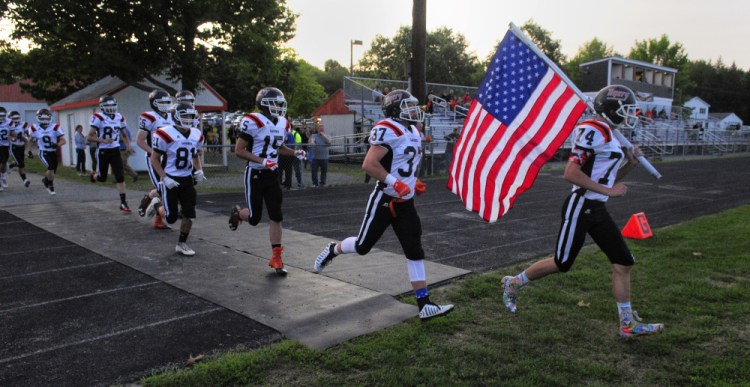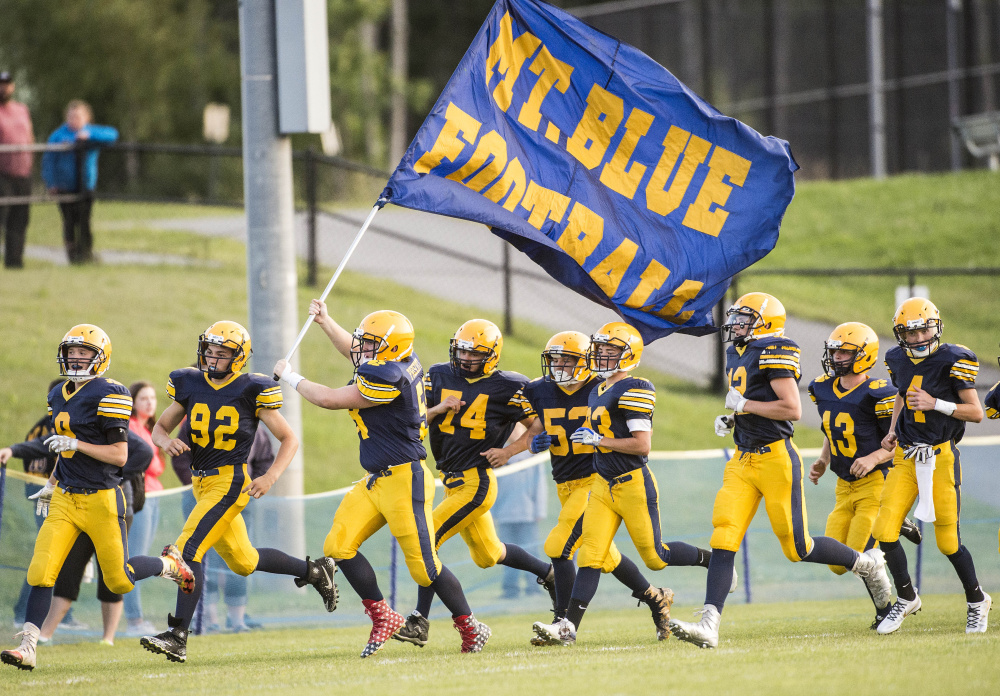As usual the high school football season opens with a lot of questions. Some are typical, the questions you ask at the start of every season. Which teams should contend for a title? Which players are frontrunners for the Gaziano Award and Fitzpatrick Trophy? What are the big games on the schedule?
The 2017 season opens Friday with bigger questions, and perhaps more of them in any season in the last 30 years, when the current regional playoff format was adopted in 1987.
In 2017, old rivalries are reborn, there’s a new system to determine playoff teams and seeding, and there’s a new division that was created to give struggling programs a chance at success. As the 2017 Maine high school football season opens, here’s a look at the big changes fans will notice this season.
WHAT IS CLASS E?
Competitive balance has been a concern for Maine high school football for years. Everybody involved with the sport acknowledges there will always be good and bad teams, that’s the nature of competition. The problem in Maine in recent seasons has been, there’s been good teams, bad teams, and barely surviving teams.
Four schools — Boothbay, Camden Hills, Sacopee Valley and Telstar — dropped varsity football, citing a lack of participation. This fall, those four schools, along with Maranacook and Traip, will play in Class E. The teams in the new class will play an eight-game schedule, primarily against each other. Playing in Class E does not prevent programs from scheduling games against other competition. Traip and Telstar each will play Washington Academy, which competes in the Class D North Little Ten Conference. Sacopee Valley has games scheduled against Stearns and Lisbon. While there is no playoff in Class E, all the games count and standings will be kept.
The hope at the Maine Principals’ Association is after a season or two in Class E, programs will be stable enough to move into that class it belongs in, enrollment-wise. For Camden Hills, that is Class C. For the other five, competing back in Class D is the goal.
WHAT IS WITH THE CROSSOVER GAMES?
Crossover games are common in Maine high school football. In recent seasons, the Pine Tree Conference Class B and Campbell Conference Class B have played crossover games in order to fill out an eight-game schedule, as did teams in Class A North and South. Playing cross-class games was a rarity.
This season, every team in Classes A, B, C, and D will play at least one crossover game. Many are playing against opponents in separate classes. For example, Cony plays in Class B and Gardiner in Class C. When this happened in the past, their annual rivalry game became an exhibition. Now, it counts. Lawrence and Winslow haven’t played a countable game in close to 30 years, but the old rivals will play each other Sept. 8 at Keyes Field in Fairfield.
By not marrying schedules completely to class and regional affiliation, teams can schedule what on paper appear to be more competitive games. That leads us to…
HEAL POINTS
Why is the MPA using Heal Points to determine playoff seedings instead of Crabtree Points?
Without turning this into a math tutorial, it boils down to this: Crabtree Points are heavily weighed toward strength of schedule. You play tougher competition, you earn more points. Using Heal Points, wins are what are important. The higher the class in which your opponent plays, the more points they are worth. In this regard, it makes sense for a strong Class C team to play a Class B team, or a Class D team to take on a Class C opponent. The Heal Point reward is worth the risk.
Often, calculating standings with either system results in the same outcome. Cream tends to rise to the top, regardless of the math involved. Looking at last season’s results, using Heal Points would have led to a few changes here and there, most notably in Class B North. Skowhegan and Lawrence would have flipped-flopped seeds, with Skowhegan No. 3 and Lawrence No. 4. Mt. Blue would have claimed the sixth and final playoff spot in the region, instead of Cony.
NEW PLACES
The enrollment cutoffs for each class led to more movement than in recent reclassifications. In the oddest movement in a long time, defending class D champion Maine Central Institute moved up to Class C, while defending Class C champion Wells moved down to Class D.
Other central Maine teams playing in new leagues this season include Gardiner, which moves from Class B North to Class C South; Madison, which moves from Class C North to Class D South, and Nokomis, which moves from Class B North to Class C North.
For the first time in a few years, no high school is playing down a class, making every team in Classes A through D eligible for the playoffs. Only two schools chose to play in a class higher than their enrollment dictates. Cheverus continues to play in Class A, while Winslow remains in Class C.
Travis Lazarczyk — 861-9242
tlazarczyk@centralmaine.com
Twitter: @TLazarczykMTM
Send questions/comments to the editors.





Success. Please wait for the page to reload. If the page does not reload within 5 seconds, please refresh the page.
Enter your email and password to access comments.
Hi, to comment on stories you must . This profile is in addition to your subscription and website login.
Already have a commenting profile? .
Invalid username/password.
Please check your email to confirm and complete your registration.
Only subscribers are eligible to post comments. Please subscribe or login first for digital access. Here’s why.
Use the form below to reset your password. When you've submitted your account email, we will send an email with a reset code.